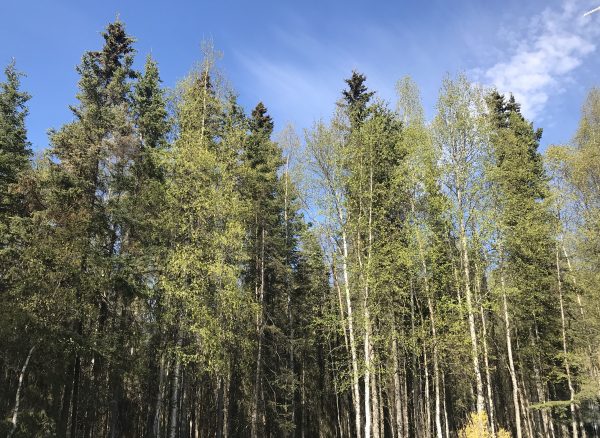
This year’s abrupt green-up sent a surge of birch pollen into the air in Interior Alaska last week.
“The readings this year have set historical highs,” said Dr. Tim Foote, an allergy and asthma specialist at the Tanana Valley Clinic in Fairbanks.
The clinic has tracked pollen levels for 20 years in Fairbanks, and, last week, the city hit a world-record birch pollen count, Foote said.
RELATED: Ask a Climatologist: A tale of early summer heat, green-up and extreme pollen
“Popped out Monday at 7,045,” he said. “Prior to that, the highest count that we had was back in 2016, at about 4,300. The highest we can find in the literature was from Copenhagen, Denmark, at 4,696 in 2014.”
After a cold winter and spring, high temperatures around the Interior prompted birch tree buds to burst, sending record-setting levels of pollen into the air, all at once.
“The birch pollen goes 36,000 feet into the air, it goes into the jet stream,” he said. “We’ve probably sent birch pollen all around the world from the subarctic region.”
Birch is one of many Interior Alaska pollens. But, Foote says, it causes the most allergy problems.
“The typical symptoms are itchy, watery eyes and nose, sneezing, and, for some people, it worsens their asthma,” he said. “Some people even get a rash from the pollen on their skin with UV light exposure.”
Foote says birch pollen levels have dropped back since last Monday’s high to about, a more average, 1,500 grains per cubic meter.
He says spruce pollen is coming next, but it generally causes less allergy problems. And then comes grass pollen in July, which is another tough one for allergy sufferers.




